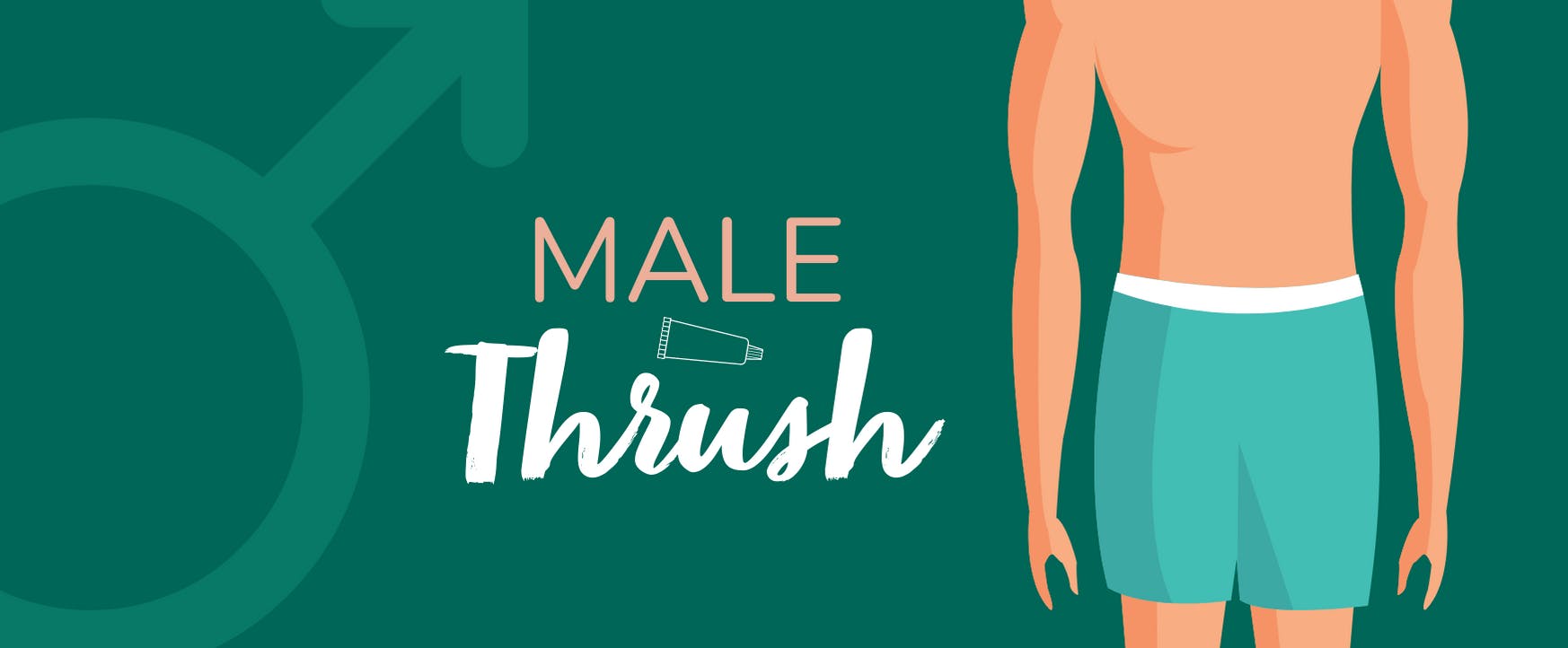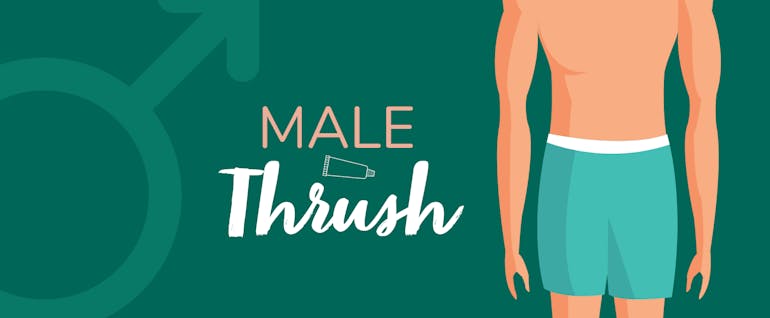Male thrush: here's what you need to know
Reviewed and fact-checked by Giulia Guerrini, Superintendent Pharmacist. Read our editorial policy to see how we create informative, accurate content.
Whether you're a man or a woman, you can get thrush: a prevalent type of fungal infection. Although thrush isn't typically serious, it can cause discomfort. It's important to note that thrush is not considered a sexually transmitted infection (STI).
Thrush is the common word for an infection from a yeast-like fungus called Candida Albicans. This fungus is often harmlessly there on our skin, but it can cause a problem when it multiplies.
Candidal infections can affect different parts of your body, but it usually causes problems in warm and moist areas, like the genital area, in the mouth (oral thrush) or on the skin. Just the places you don’t want it, really.

Can men get thrush?
Haven’t heard about men being able to get thrush? Turns out, a lot of guys are in the dark on this one. Thrush in men is a common problem, but because it happens way more often to women – and is way less talked about for men – many people just don’t realise it.
Thrush is usually a mild yeast infection, and in most cases, thrush clears up quickly after treatment. But as it’s not common knowledge, often thrush in men can be spread to partners – or develop much further than it needs to.
Where does thrush affect men?
Male thrush (on the penis) usually affects the head and the foreskin and can lead to inflammation in the head of the penis (known as balanitis). Oral thrush usually affects the mucous membranes in the mouth.
What are male thrush symptoms?
Now you know about it, you’re probably wondering, "What does male thrush look like?" Well, you might not have any male thrush symptoms. But that doesn’t mean you don’t have it.
Here are a few signs of male thrush to watch out for:
- Irritation, burning or itching under the foreskin or on the tip of the penis
- Redness, or red patches under the foreskin or on the tip of the penis
- Dull, red skin
- Swelling and irritation
- Thick, white, lumpy discharge under the foreskin or in the skin folds
- Unpleasant odour
- Difficulty pulling back the foreskin
- Pain and irritation after sex
- Pain during urination
What causes male thrush?
Candida is quite happy to live on our skin normally, but certain things can disturb the balance and lead to an overgrowth of this yeast-like fungus. And when that happens, a male thrush infection can start to develop.
You can even get male thrush from wearing tight clothes in warm weather, or not drying yourself thoroughly after showering or exercising. So while that 5k is good for your health, not taking the time to towel off properly afterwards isn’t.
Here are a few male thrush causes to be aware of:
- Antibiotics
- Poor hygiene, especially if you’re uncircumcised
- Not drying carefully after washing (bacteria thrives in warm, moist places)
- Skin conditions that cause the skin on your penis to be cracked or broken
- Bath foam, soaps, shower gels, lubricants, and other products: these can irritate and damage the skin of the penis, leaving it open to infection
- A tight foreskin, which can make it difficult to get the area under the foreskin clean and dry
- Having diabetes
- Having an immune system that isn't working properly: this could be due to conditions such as AIDS, or medicines such as steroids or chemotherapy
How long does male thrush take to clear up?
The symptoms and irritation can last for 10-15 days, and usually tend to regress following Canesten therapy or discontinuation of the use of the irritating/allergenic product that caused the thrush.
Is male thrush a sexually transmitted infection?
Don’t panic. Thrush in men isn’t classed as a sexually transmitted infection. But it can be passed on during sex, or trigged by it. It’s rare that thrush gets passed on between partners, but it can happen – especially if you’re not showing any male thrush symptoms and don't even know you’re passing it on.
It’s also really important to get any thrush symptoms checked out, because they’re quite similar to some sexually transmitted infections, such as chlamydia. You’ll want to make sure you’re not confusing one for the other, and getting the right treatment.
How to treat male thrush
So, how do you treat male yeast infection, and how long does male thrush take to clear up? Here’s the good news: Male thrush infections are often quite mild and may clear up in as few as three days. But sometimes the symptoms are pretty unbearable – and that’s when male thrush treatment is there to help. With good antifungal cream for men, thrush usually goes away in around 10 to 14 days.
Most common yeast infection medications are often marketed towards women (or seen as female products), but they’re also designed to help treat the symptoms of male thrush. Just avoid any ‘internal’ products, as they’re usually designed for the vagina.
Not sure which products to use? Our pharmacist recommends Canesten antifungal cream, to help treat the itching and burning that comes with thrush (which can be really irritating – so you’ll want some soothing relief). Canesten Thrush Cream contains 2% of the active ingredient Clotrimazole, which promotes a healthy pH balance and soothes male thrush symptoms. It usually treats thrush within 7 days.
If you have an ongoing thrush problem, make sure you chat with your GP about it before trying to fix it at home. They’re there to help you – and there’s no need to be embarrassed about making sure your health is top-notch.
When you need relief fast, we’re here to help. Order home medications such as Canesten male thrush products with us today, for next-day delivery.
Want to know more about male thrush? Watch our expert pharmacist, Giulia, explain below:


